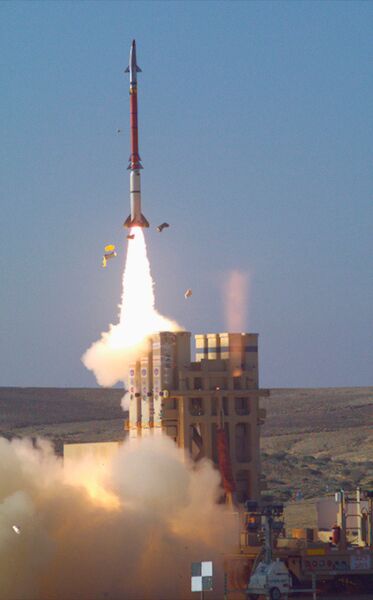
A David's Sling system launches a Stunner interceptor in a test. (Israel Defense Forces)
The David's Sling air-defence system made its first two successful operational interceptions during the five-day escalation between Israel and the Palestinian Islamic Jihad (PIJ) militant group in the Gaza Strip from 9 to 13 May.
In the first interception on 10 May, the Israeli Air Force (IAF) took the opportunity to test the system's capability, while the second was linked to an operational requirement during a rocket attack, with David's Sling being the best option for intercepting the threat, Janes has learnt. The date of the second interception has not been revealed.
The PIJ launched 1,469 rockets during the escalation, 1,139 of which crossed into Israel, according to the Israeli military. It credited the Iron Dome air-defence system with intercepting 437 rockets, which it said represented a 95.6% success rate as rockets heading for unpopulated areas are ignored. However, two civilians were killed in Israel, while another three were killed in the Gaza Strip by rockets that fell short.
David's Sling is designed to intercept threats that have a higher altitude and longer range than those covered by Iron Dome. It uses Stunner interceptors with multipulse rocket motors and active radar seekers.
The system is operated by the IAF's 66th Battalion, which was established in 2016 and is currently commanded by Lieutenant Colonel Revital Barzani. The unit conducted its first attempted operational intercept on 23 July 2018 against two Syrian Tochka (SS-21) ballistic missiles that initially appeared to be heading into the Israeli-controlled Golan Heights. The intercept was aborted when it was determined the missiles would actually land on rebel positions in southern Syria, but only one Stunner self-destructed, with the other landing inside Syria.
Looking to read the full article?
Gain unlimited access to Janes news and more...







